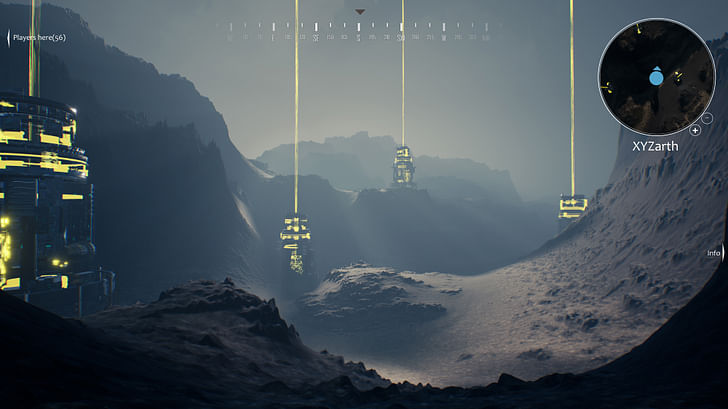

This week Archinect connected with Chunsu Ouyang, Tianyi Song, Xianrui Wang to learn more about their final project - INNERMOST. The trio of recent graduate students of UCLA Architecture and Urban Design's Master of Architecture II discuss their project's use of video game narratives in architecture, working remotely, and their outlook on finding a job after graduating.
Advised by Natasha Sandmeier & Nathan Su of UCLA's IDEAs Entertainment Studio program, the students work towards "conceiving a game that can make a metaphor of people growing up/self-developing while collaborating with others, in order to explore the possibility of a game as a new social medium."
Archinect's Spotlight on 2020 Thesis Projects: 2020 has been an extraordinarily challenging year for architecture graduates. Students were displaced as schools shut down, academic communities had to adapt to a new virtual format, end-of-year celebrations were canceled or changed dramatically, and now these students are graduating into an extremely challenging employment market. To support the 2020 class we're launching a summer series of features highlighting the work of thesis students during this unique time of remote learning amid COVID-19. Be sure to follow our 2020 thesis tag to stay up to date as we release new project highlights.
INNERMOST is a world in which terraforming is a metaphor for self-discovery - a world built, carved, harvested and lived, simultaneously online and IRL.
Please briefly describe your thesis/final project and your inspiration.
INNERMOST is a world in which terraforming is a metaphor for self-discovery - a world built, carved, harvested and lived, simultaneously online and irl. The objective of the multi-player game is for each player to reach their own planetary world and to reveal its character, which in turn embodies the player's own nature as an individual person and member of the game world's interplanetary terraforming system.
A new player progresses from tourist in the worlds of others to caretaker / environmental architect of their own world through journeys of strategic exploration, terraforming and resource exchange. With each task they complete, a player uncovers new information about the nature of the planet that is waiting for them. The game narrative is from a streamer who played this game as a new player and was obsessed with building/exchanging/terraforming in the worlds of others. Finally his obsession costs the well-being of his own planet. In the first person view, you can only hear the other players instead of seeing them and track their activities by what they’ve built.. In the planetary/third person, you can position yourself, recognize yourself, understand your world objectively. By switching the views, you can be a bystander or a decision maker.
We are conceiving a game that can make a metaphor for people growing up/self-developing while collaborating with others, in order to explore the possibility of a game as a new social medium.
How did your project change as studios transitioned to remote learning?
Remote learning has its pros and cons. One benefit is that we can save from not having to run our daily commutes which allows for for more time to work and coordinate. Workflow is continuous and has a healthy rhythm. We can think about the meaning of our project and the core of this game without any interruption. One disadvantage is transferring larger files. We each have our own responsibilities and these file transfers mean that some work must be transferred separately versus if we had been in the studio together. Since we cannot work in the same studio space with real-time feedback from each other misunderstandings of the design intentions can only be corrected in our next Zoom meeting.
Remote learning has its pros and cons [...] Effective and efficient communication and task distribution plays a huge role in the final result.
You have to use every possible opportunity to maintain your team and studio community.
Any tips for students working through their final projects?
First, the final project must be something that students really want to do. Being active and passionate is important. Secondly, group work is a two-sided coin. More people can lead to more production, but more people can also lead to more communication problems. Effective and efficient communication and task distribution plays a huge role in the final result. Our team, and the whole studio, held regular Zoom meetings, maintained online workflow schedules, micro boards, and Whatsapp conversations. You have to use every possible opportunity to maintain your team and studio community.
INNERMOST by Chunsu Ouyang, Tianyi Song, Xianrui Wang. Advised by Natasha Sandmeier & Nathan Su
As recently graduated students, how do you feel about the architecture industry right now and job prospects?
New eras and new media bring new ways of design. That’s what we explored in this program and what we want to bring to the architectural industry. We think that the architecture industry values expression and seeks for the expression’s quality, intuitive feeling and speed. As real-time rendering comes in sight, the game industry’s pursuit of expression starts to affect the standard of architectural expression. For instance, the game producing software Unreal Engine now has modes for architecture and interior design, and many designers are using it in their professional practice. We believe that the future of architectural expression is to blur the boundary between virtual and reality.
Katherine is an LA-based writer and editor. She was Archinect's former Editorial Manager and Advertising Manager from 2018 – January 2024. During her time at Archinect, she's conducted and written 100+ interviews and specialty features with architects, designers, academics, and industry ...
No Comments
Block this user
Are you sure you want to block this user and hide all related comments throughout the site?
Archinect
This is your first comment on Archinect. Your comment will be visible once approved.